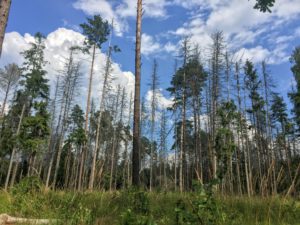
What’s the likelihood that a tree will die in a given year? How does this vary across the world? What are the causes of this? How might this change in the future? TreeMort is about improving our understanding of tree mortality across the globe.
So far the team has discovered…
More news can be found on our Project Updates page.
One core project aim is to provide datasets that can support model-based assessments of the terrestrial carbon cycle. A global disturbance rate dataset that can be applied in vegetation models can be downloaded here.
Links to more datasets from the project can be found on our Datasets page.
For regular updates, follow us on Twitter at @TreeMort_ERC
